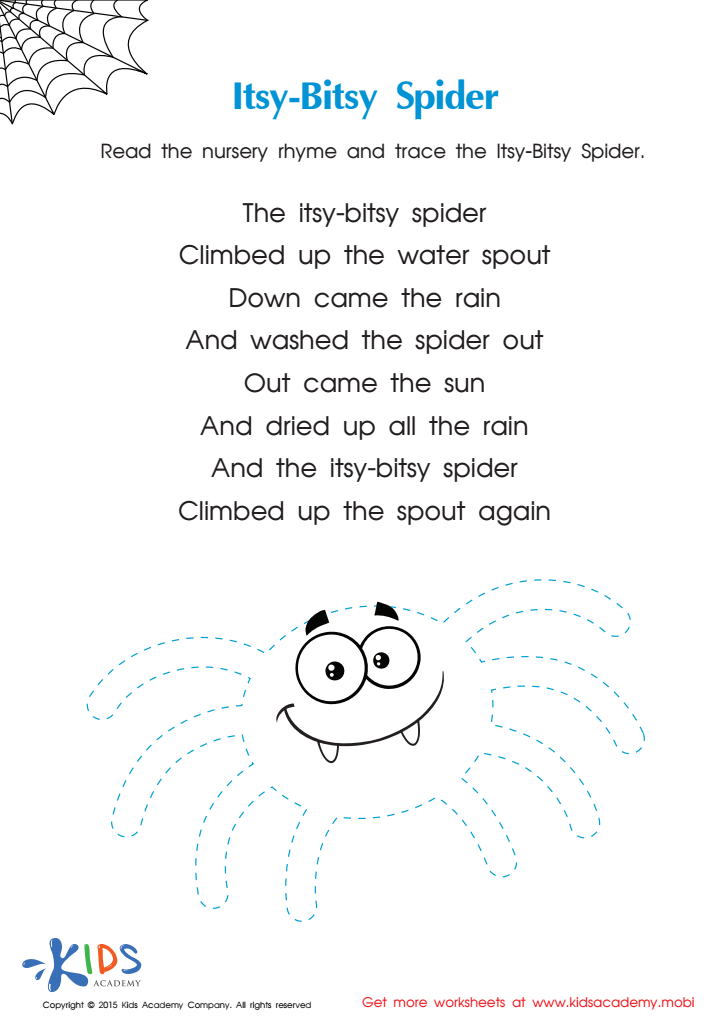Nursery Rhymes Worksheets for Ages 7-8
5 filtered results
-
From - To
Unveil the timeless charm of storytime with our Nursery Rhymes worksheets, specially crafted for children Ages 7-8. Dive into a world where whimsy and learning blend seamlessly, bringing classic tales to life through engaging exercises. These worksheets are meticulously designed to foster literacy, comprehension, and creative thinking skills, making them perfect for young minds eager to explore the rhythmic tales of yesteryears. From Humpty Dumpty's great fall to the grand old Duke of York's march, our collection for Ages 7-8 offers an enchanting journey through beloved rhymes, ensuring a delightful learning experience that kids will cherish.


Rhythm and Rhyme: Twinkle, Twinkle, Little Star Worksheet


Nursery Rhymes: The Bingo Song Worksheet


The Five Little Monkeys Nursery Rhyme Worksheet


Nursery Rhymes: Twinkle Little Star Worksheet


Itsy Bitsy Spider Nursery Rhyme PDF Worksheet
Nursery Rhymes for Ages 7-8 are more than just catchy tunes and playful words; they are a crucial tool in child development. Integrating worksheets based on these nursery rhymes into a child’s learning curriculum can have enormous benefits. Firstly, these worksheets help to solidify reading and comprehension skills. At ages 7-8, children are developing fluency in reading, and the rhythmic patterns of nursery rhymes make it easier for them to predict and decode words.
Moreover, Nursery Rhymes worksheets for this age group enhance memory and concentration. The repetitive nature of the rhymes aids in memorization, encouraging children to recall sequences and stories. This not only helps in language acquisition but also in building a foundation for future learning skills.
Additionally, engaging with Nursery Rhymes worksheets fosters creativity and imagination. Children at this age are at a prime stage of imaginative development. By interacting with the fantastical elements found in nursery rhymes, they can expand their creative thinking and storytelling abilities.
Lastly, these worksheets serve as an excellent tool for introducing historical and cultural contexts. Many nursery rhymes have rich backgrounds, providing children with insights into different times and cultures.
In sum, Nursery Rhymes worksheets for Ages 7-8 are invaluable in promoting reading, memory, creativity, and cultural awareness, making them an essential component of educational materials for young learners.

 Assign to My Students
Assign to My Students





.jpg)














